.

Dome of the Rock (Arabic: مسجد قبة الصخرة, Hebrew: כיפת הסלע), on the Temple Mount in the Old City of Jerusalem: NE facade, panel detail with ceramic tiles. The tiles were added as part of the redecoration of the building ordered by Sultan Suleyman who sent a group of tile-makers from Istanbul to Jerusalem. They were led by Abdullah Tabrizi who signed the cut-tile inscription at the top of the drum with the date 952 AH/AD 1545-6 and the inscription above the north porch with the date 959 AH/AD 1551-2. The tile-makers used a range of techniques, including cut-tile work, cuerda seca, and under-glaze: photo by Godot13, 24 March 2013
The rock is the gray particular of man's life, The stone from which he rises, up -- and -- ho, The step to the bleaker depths of his descents ... The rock is the stern particular of the air, The mirror of the planets, one by one, But through man's eye, their silent rhapsodist, Turquoise the rock, at odious evening bright With redness that sticks fast to evil dreams; The difficult rightness of half-risen day. The rock is the habitation of the whole, Its strength and measure, that which is near, point A In a perspective that begins again At B: the origin of the mango's rind. It is the rock where tranquil must adduce Its tranquil self, the main of things, the mind, The starting point of the human and the end. That in which space itself is contained, the gate To the enclosure, day, the things illumined By day, night and that which night illumines, Night and its midnight-minting fragrances, Night's hymn of the rock, as in a vivid sleep.
Wallace Stevens (1879-1955): The rock is the gray particular of man's life, from The Rock, 1954
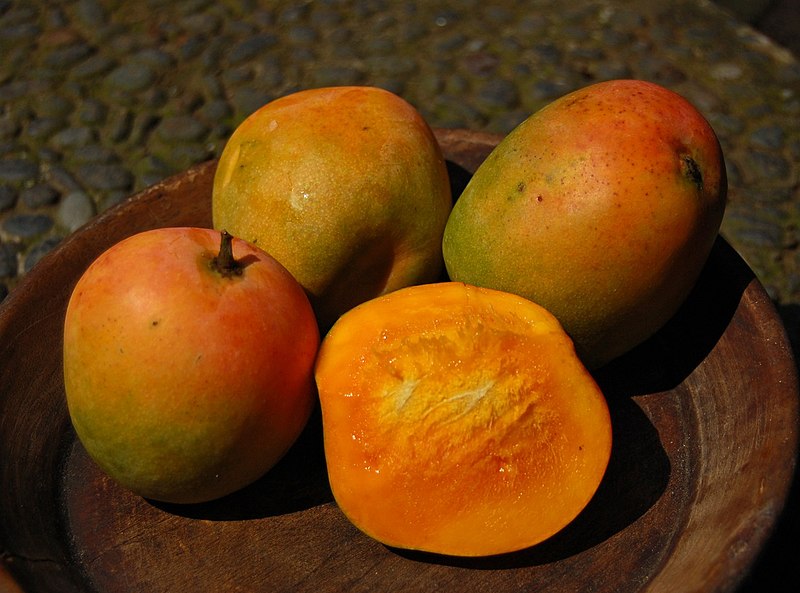
Mangga gedong gincu, a cultivar of mango, Mangifera indica, from Tomo, Sumedang, West Java, Indonesia: photo by W.A. Djamitko (Wie146), 21 October 2007
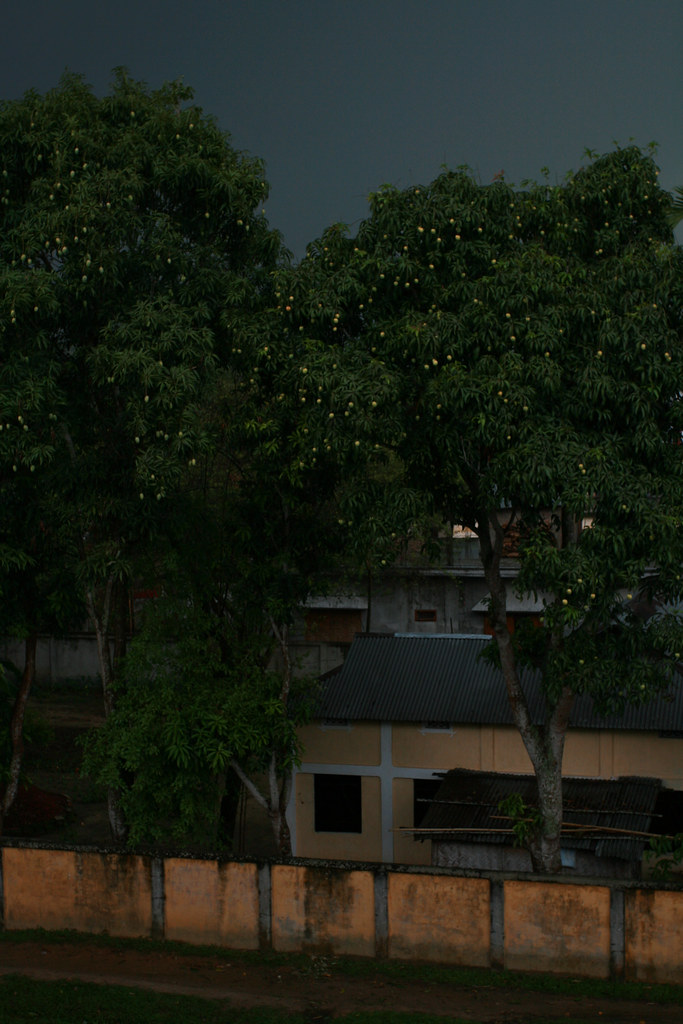
Mango trees during a storm, Srimongal, Syrhet, Bagladesh: photo by s_karr, 13 May 2009

A hatch in the Dome of the Rock, Old City, Jerusalem. The decorative writings just below the dome can be clearly seen and easily read. Taken under a low January morning sun photo by David Baum, 3 January 2010
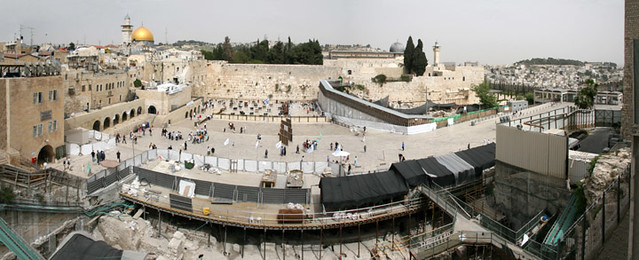
Jerusalem, the Wailing Wall. To reach the wall you must pass through a metal detector and several other checks. Once there everything slides from your mind. Even if it's often full of people, even if you're in front of a rock wall, there's something in the air that brings your mind beyond the facade. On the left, the Dome of the Rock, the third most important place for Muslims. On the right, far, Mount of Olives. On the bottom, archeological excavations: panorama of four stitched photos by emanuele (semaone), 12 April 2008

Inside the Dome of the Rock Mosque, Old City, Jerusalem, The most interesting part of the Dome of the Rock's design and architecture is its attempt to fit a mosque into an octagonal structure -- unlike other mosques, you never really know which way is forward in the Dome unless you look really hard. But just point your head up and stare at the intricate details all over the interior as you try to find your way south, to the front of the mosque, making a turn seemingly every few feet: photo by Asim Bharwani (modenadude), 18 November 2010

Dome of the Rock Interior and Foundation Stone. The Foundation Rock is one of the highest points of Jerusalem's Old City. The Dome of the Rock was built between 687 and 691, making it the oldest existing Islamic building in the world: photo by Damon Lynch. 16 July 2005

Corner façade detail of the Dome of the Rock (Arabic: مسجد قبة الصخرة, translit.: Masjid Qubbat As-Sakhrah, Hebrew: כיפת הסלע, translit.: Kipat Hasela) on the Temple Mount in the Old City of Jerusalem: photo by Godot13 (A. Shiva), 24 March 2013
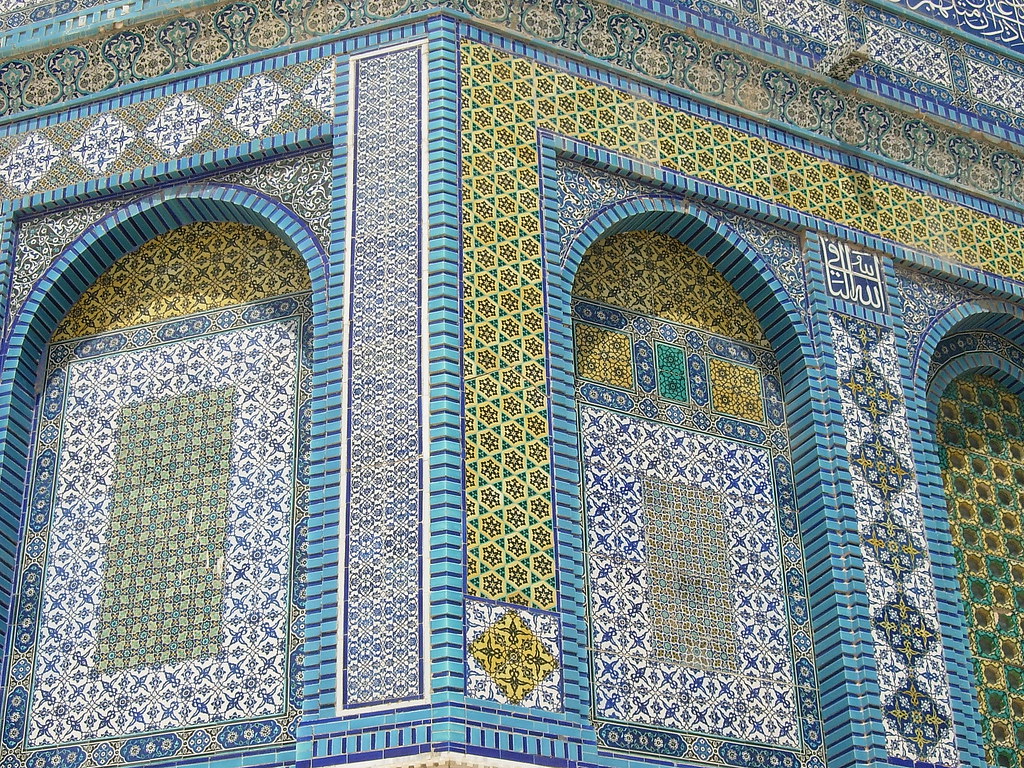
Tile work at the Dome of the Rock Mosque, Temple Mount, Jerusalem: photo by schopfer, 20 May 2008

Ceramic tile work, Dome of the Rock, Old City, Jerusalem: photo by J McDowell, 25 March 2010
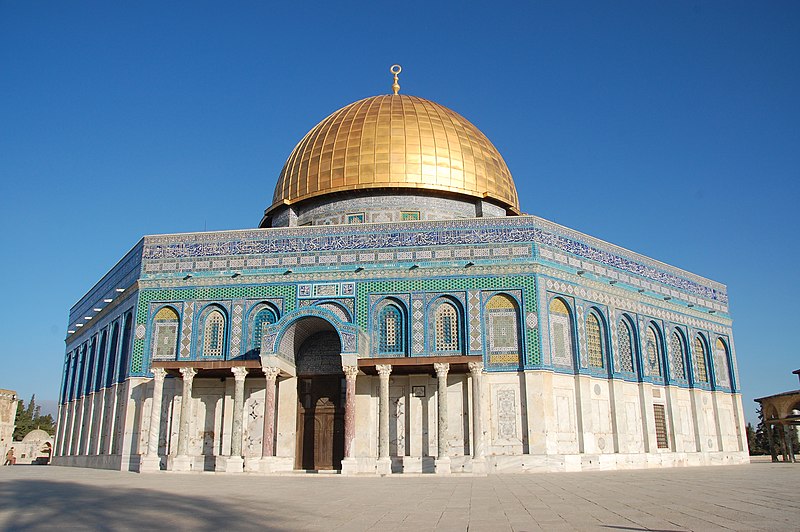



7 comments:
Tom,
mango trees in a storm, Dome of the Rock. . .
that which is near, point A
In a perspective that begins again
At B:
7.23
light coming into fog against invisible
ridge, bird slanting toward pine branch
in foreground, wave sounding in channel
point relative to condition,
coordinate means that
mass per unit of time, that
field of equation, in
fog against top of still shadowed ridge,
fog on horizon to the left of the point
Steve,
Large white and grey clouds drifting
in off bay reflected in
that which is near, point A
In a perspective that begins again
point relative to condition,
coordinate means that
At B: mango trees in a storm,
Dome of the Rock. . .
mass per unit of time, that
field of equation, in wave of
traffic rushing down hill from Circle. . .
Thank you Tom, for waking me up to the beautiful and deeply mysterious poem and the wonders of the tiles of the dome of the rock in the photos; the convoluted poem, nearly spherical, like the great rock, it’s images of “odious evening bright/With redness that sticks fast to evil dreams;/ The difficult rightness of half-risen day” where I find myself truly near the mango’s rind, inquiet, not likely to adduce the tranquil self, perhaps to emerge into the enclosure of the day, which seems liberating if only I turn towards its great space which is evidently also the mind. I glean hints from the patience of the tile maker, piecing together each piece, each line of inspired design and hymn. Like you putting together these images of word and stone for us. Thanks again for that. The mind voyages beyond the façade of the rock and the crowd there. Here it is a kind blessing to simply know of that there.
Harris
The step to the bleaker depths of his descents ...
Jerusalem knows a good deal about that.
Beautiful building; hurts to look on it.
“ . . . the difficult rightness of half-risen day . . .” So fine, so fine; so much here that illuminates that long journey between points A and B, and even beyond . . .
(poem written on the occasion of a British Muslim friend who wanted to visit Jerusalem and the Farthest Mosque (Masjid al-Aqsa), but was refused entry, and spent the night in an Israeli jail before being deported back go the UK.)
ADAM’S VISIT TO JERUSALEM
I headed to Jerusalem with my heart high,
to see the golden dome, prostrate there and say “Hitta”
as it says in Qur’an, “Relieve us of our burdens,”
my praise poem tucked in my rucksack,
and in my poor way give the holy city some
merciful attention just to touch its
livid and precious soil.
But the cell door clanked shut and the soil I touched
was stained flagstones, humid stone walls, dust.
How many times, how many arduous journeys does it take
to enter the precincts and give my heart’s salutations?
Shadows rustled papers, fingered my passport, my visa, my
curriculum vitae, my vaccination report, my x-ray, my
spinal tap, brain scan, heartbeat elusive to their machinery
as God’s one sun’s ray of light skeined through the one window
onto my bended knees.
Many thanks, friends, sorry for the silence (veering a bit too near the Rock, these days and nights...)
This post originally took many turnings to incorporate historical realities, but where to stop with those. And of course at any introduction of realpolitik Wallace Stevens would have been banging on the walls of his box (and doubtless fracturing a metacarpal or two, as when, and of course all this is a part of the Glory of the Annals of Our Literature, he took a drunken swing at Hem on that one of doubtless many legendary gladiatorial occasions in Key West).
Banksy's appropriated (well, bought) scale model reconstruction of the Old City, with soldiers and watchtowers brought in, took up many a frame... and then there was the myriad photo documentation of the practical (political) complexities of visiting this place for the Palestinian inhabitants of this occupied (or were we saying appropriated?) land.
One photo that landed on the cutting room floor seems to me to sum up much of what might be said (lamented) on the latter theme:
Dome of the Rock Mosque, Haram esh-Sharif, Old City, East Jerusalem: photo by Jodah Jadallah, 22 May 2008
Post a Comment